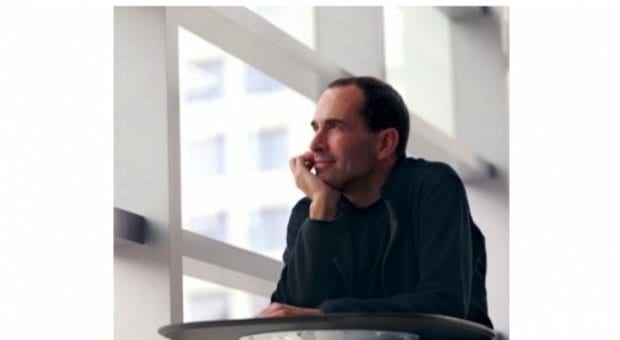John Greyson is gay. Yes, it’s true. Big news.
Well, not really. But you’d be forgiven for wondering about the well-known filmmaker’s sexuality over the past several weeks as he languished in an Egyptian prison with Canadian doctor Tarek Loubani. Much of the media took the unusual step of leaving out this detail, worried about the potential harm that might come to Greyson if prison guards, or his cellmates, found out about his fondness for sodomy in a country where homosexuality is not all the rage.
The media had a precedent in James Loney, a gay Canadian who was kidnapped in Baghdad in 2005. Loney later told Xtra that he worried his abductors would learn about his sexuality. “On the second day of my captivity I thought, ‘Oh shit, what if they find out I’m gay? What if they Google me?’” But journalists in Canada cooperated with Loney’s family to keep his homosexuality out of the story, even cropping Loney’s then partner, Dan, out of photographs they published.
Greyson’s friends and family asked Xtra to adhere to a similar course of action over the past several weeks, a request that was much debated in our newsroom. After all, the fact that Greyson is a prominent gay filmmaker and activist is the very reason reporters at this gay newspaper were writing about this story in the first place. Greyson chose to travel to the Middle East, a part of the world known for its homophobia, so why should the media be asked to hide something Greyson never did? Indeed, the first story Xtra published about the arrest on Aug 19 ran with the headline “Gay filmmaker John Greyson remains in Egyptian prison.” At that stage, most believed Greyson and Loubani’s release was imminent. As their incarceration dragged on, Xtra’s team grudgingly reported the story without referring explicitly to Greyson’s sexuality, even though, as Greyson later told Xtra reporter Justin Ling, “you have to be a really bad Googler not to find out.”
Xtra was not the only newspaper to struggle with this. An Oct 6 Globe and Mail story referred to Greyson’s long-time partner, Stephen Andrews, as his “friend of 17 years.” The story was published one day after Egyptian officials had released the pair from prison but prevented them from getting on a flight to Germany.
Columnist Margaret Wente, The Globe and Mail’s radical grandstander, wrote soon after that “Many of the media haven’t mentioned that Mr Greyson is gay for fear that it would go worse for him in homophobic Egypt. But it’s no secret; his sexual orientation is very public.” That’s one thing Wente is right about, but her piece highlighted inconsistency at the national newspaper. In an Oct 10 response to Wente’s column, the paper’s public editor, Sylvia Stead, writes that Globe editors felt Greyson’s sexuality was relevant to the story “because he has made it a central part of his political and public identity.” Stead also notes that editors spoke with Middle East experts who said, “The freed man was not in danger because of his sexual orientation, even though he and Dr Loubani, at that point, were unable to leave Egypt.”
Why, then, did Globe reporters refer to Andrews as Greyson’s “friend” after the pair had been freed?
We now know that it was Canadian embassy officials, not Greyson, who insisted on keeping his sexuality secret while he was incarcerated. We also know his cellmates had likely found out about it. Was it worth it for Xtra to help Greyson back into the closet, or did it — as in the case of the Globe — create unnecessary ambiguity for our readers? While we might have felt wrong about temporarily suspending our reporting of a widely known fact, if it helped get Greyson home safe, it was worth it.


 Why you can trust Xtra
Why you can trust Xtra


